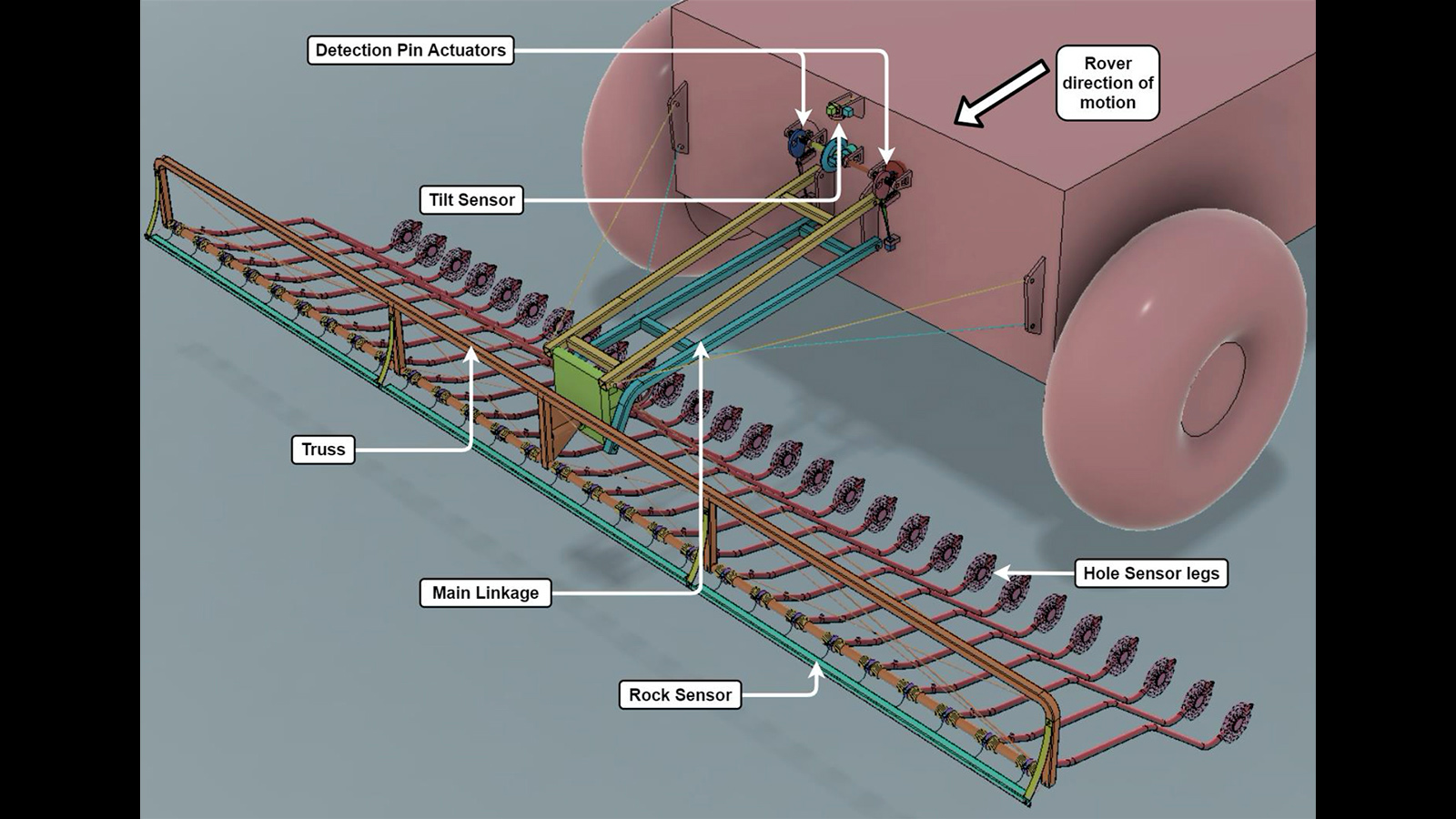Steampunk Venus rover ideas win NASA contest to 'explore hell' with clockwork robots

A future Venus rover could be decked out with steampunk-esque rollers and fenders as it carefully explores a planet that is so hot that the environment has destroyed other spacecraft within mere minutes of landing.
These ideas of using "rollers and fenders," which would replace traditional spacecraft sensors, were just some of the designs the public suggested after NASA's Jet Propulsion Laboratory asked for help this spring in designing the new Venusian machine. JPL is considering including some of these innovative concepts from the public on a Venus rover first proposed under the NASA Innovative Advanced Concepts program, which aims to explore far-out ideas..
JPL is hoping to go back to Venus, a world that has only seen surface exploration from a handful of Soviet Union Venera missions in the 1970s and 1980s. These reinforced spacecraft, capable as they were for their era, couldn't quickly succumbed to the oven-temperature heat and deep-water-like pressure of Venus' surface. Nobody has dared try landing since, although several countries have sent missions to look at Venus from above.
Related: What Would It Be Like to Live on Venus?
JPL's new rover concept from the contest, however, could make a new landing possible. The craft would use a small wind turbine and springs to move around, reducing its dependence on computers and advanced equipment. Named Automaton Rover for Extreme Environments, the steampunk-like design would rely on mechanical locomotion to perform operations and follow instructions autonomously. The mission could last for months on Venus' surface if all goes according ot plan.
The public responded in the hundreds to JPL's request for ideas to replace traditional spacecraft sensors – sensors that would not last for long on Venus. Administered through the NASA Tournament Lab and the HeroX crowdsourcing platform, JPL received 572 entries (both team and individual) from 82 countries. The first-place winner received $15,000 and cash prizes were awarded for some other winners and finalists as well.
"The response from the community was incredible and better than I ever dreamed," Jonathan Sauder, a senior mechatronics engineer at JPL, said in a statement. "There were so many great ideas and well-developed concepts that in addition to first, second, and third place, we decided to add two finalists and another 10 honorable mentions in recognition of the amazing work people put into this project."
Get the Space.com Newsletter
Breaking space news, the latest updates on rocket launches, skywatching events and more!
The first-place winner, Youssef Ghali, also won first prize for a previous NASA Tournament Lab competition called the Next Generation Animal Tracking Ideation Challenge. The full list of awardees is below.
Final Awards



- First Place: "Venus Feelers" by Youssef Ghali
- Second Place: "Skid n' Bump - All-mechanical, Mostly Passive" by Team Rovetronics
- Third Place: "Direction Biased Obstacle Sensor (DBOS)" by Callum Heron
- Best Prototype: "AMII Sensor" by KOB ART
- Most Innovative: "ECHOS: Evaluate Cliffs Holes Objects & Slopes" by Matthew Reynolds
Honorable Mentions
- "CATS - Cable Actuated Tactile Sensor" by Team - Spaceship EAC
- "Mechanical Logic Obstacle Avoidance Sensor" by Christopher Wakefield
- "Clockwork Cucaracha" by Michael Sandstrom
- "Vibrissae Inspired Mechanical Avoidance Sensor" by ARChaic Team
- "V-Track with Scotch Yoke Clinometer - Prototype" by Jason McCallister
- "SPIDER (Sense, Perceive, ID in Exploration Rover)" by Ryan Zacheree Lewis
- "The Double Octopus" by Thomas Schmidt
- "Mechanical Sensor for Avoiding Compound Obstacles" by Aurelian Zapciu
- "DEMoN Fire Sensor" by Santiago Forcada Pardo
- "Cane and Able" by Martin Holmes
Follow Elizabeth Howell on Twitter @howellspace. Follow us on Twitter @Spacedotcom and on Facebook.
Join our Space Forums to keep talking space on the latest missions, night sky and more! And if you have a news tip, correction or comment, let us know at: community@space.com.

Elizabeth Howell (she/her), Ph.D., was a staff writer in the spaceflight channel between 2022 and 2024 specializing in Canadian space news. She was contributing writer for Space.com for 10 years from 2012 to 2024. Elizabeth's reporting includes multiple exclusives with the White House, leading world coverage about a lost-and-found space tomato on the International Space Station, witnessing five human spaceflight launches on two continents, flying parabolic, working inside a spacesuit, and participating in a simulated Mars mission. Her latest book, "Why Am I Taller?" (ECW Press, 2022) is co-written with astronaut Dave Williams.
-
newtons_laws Whilst a Venus surface rover could utilise more mechanical rather than electrical propulsion methods it still has to have some onboard electronics in order to take measurements and most importantly maintain radio communication with an orbiter to send back data. With surface temperatures of about 465 deg Celsius this is no easy task. Gallium Arsenide based electronics can operate at higher temperatures than silicon based electronics (over 300 deg C operation has been demonstrated for GaAs devices), but even so if the electronics is merely thermally insulated from the external Venus surface conditions it would only be able to operate for a few hours at best until the heat penetrates the insulation and raises the electronics temperature above its operating limit, so to operate continuously there would need to be active refrigeration powered by some source such as an RTG or even wind turbine as illustrated in some of the NASA contest entries. Alternatively at least for the radio transmitter an interesting possibility occurs to me - old fashioned thermionic valves aka "tubes" should be able to operate at Venusian ambient temperatures, so maybe Venus rovers should use those rather than solid state electronics, that really would be a "steampunk" rover! :tonguewink:Reply
